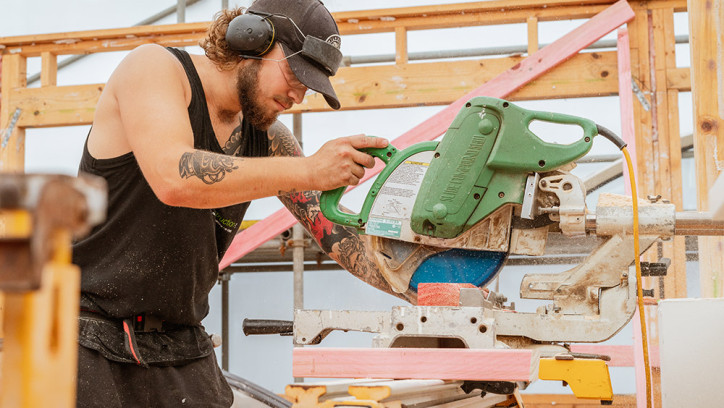Programme of work
Last updated: 2 November 2023

The Building Code update outlines the topics being worked on for current and future consultations. These topics supports other programmes of work such as higher-density housing and Building for Climate Change.
In 2022 MBIE consulted on changes to support Aotearoa New Zealand to deliver safe, healthy and durable buildings as part of the Building Code update.
In November 2023 changes were made to the Building Code to ensure new buildings better protect the safety and wellbeing of New Zealanders. Updates were made on plumbing and drainage, protection from fire and structural stability of hollow-core floors.
Recent Building Code updates
Plumbing and drainage
We proposed changes that focussed on ensuring tap water intended for drinking is healthy, safe and fit for human consumption. These changes to the Building Code compliance pathways for water supply, foul water and surface water aim to improve the safety and reliability of new plumbing and drainage systems.
The changes made for plumbing and drainage included limiting the allowable lead content in certain plumbing products, reducing the risk of hot water scalding injuries and protecting potable water supplies. New Zealanders can now have greater confidence that water from a tap is healthy and safe to drink.
Hollow-core floors
As part of this year's Building Code update, we are removing the citation of clause 18.7.4.4 of New Zealand Standard 3101.1:2006 from the verification method B1/VM1.
MBIE understands there is already a downward trend in use of hollow-core floor systems following the 2016 Kaikōura earthquake and the advisory note from the Structural Engineering Society of New Zealand (SESOC) and the New Zealand Society for Earthquake Engineers (NZSEE) technical societies in 2021. We believe removing this 'deemed to comply' solution from B1/VM1 will minimise the chance of poorly designed systems being specified in new building work.
Protection from fire
As part of this year's update, the changes we made aim to improve the level of fire safety for buildings.
As the demand in multi-unit dwellings continues to increase we are looking to support this type of construction with simple solutions for the associated fire risks. We made changes to improve the level of fire safety for residential homes, by updating acceptable solution C/AS1. This acceptable solution covers fire safety for low-rise residential buildings where people sleep, and 'outbuildings' such as garages.
The changes bring the fire safety system requirements in line with the latest industry standards to ensure that the compliance pathways reflect modern design practices.
These changes will improve fire safety by requiring interconnected smoke alarms throughout new homes. This will help ensure that all occupants in that home are notified in the event of fire, no matter where in house it occurs.
Future focus
MBIE is continuously improving the built environment in Aotearoa New Zealand and working on future changes that would support higher-density housing and Building for Climate Change as part of the Building Code update programme. Below are some topics we are focusing on for future updates.
Structure and Geotech
- Timber treatment and timber use (Amending B2/AS1)
- Timber-framed buildings up to three storeys in height (Supporting a new version of NZS 3604 "Timber-framed buildings" and amending the citation in B1/AS1)
- Timber structures design for complex buildings (Amending B1/VM1 to cite new versions of NZS AS 1720.1 "Design methods for Timber Structures" and AS/NZS 1720.4 "Timber structures - Part 4: Fire resistance of timber elements")
- Addressing seismic risk in structural and geotechnical engineering design (Amending B1/VM1 and B1/VM4)
- Issuing information to support Low Damage Seismic Design with support from Engineering New Zealand
- Issuing guidance for earthquake geotechnical engineering practice modules.
Protection from fire
- Fire performance of external wall cladding systems next steps (Amending C/AS2 and C/VM2)
- Enabling effective firefighting operations (Amending C/AS1, C/AS2, C/VM2)
- Revised framework for fire engineering design of complex buildings (Amending C/VM2)
- Revised fire safety standards including building hydrants and reaction-to-fire testing (Amending C/AS1, C/AS2, C/VM2).
External envelope and internal environment
- Weathertightness and thermal performance of windows (Amendments to E2/AS1 and E2/VM1 including updating citation to TS4211 "Specification for performance of windows")
- Implementation of the operational efficiency and whole-of-life embodied carbon emissions frameworks into the Building Code to support the Building for Climate Change programme.